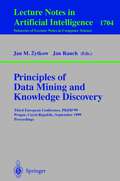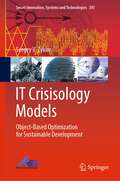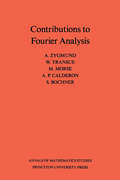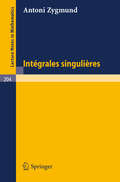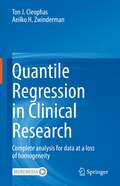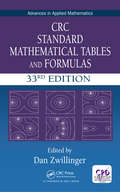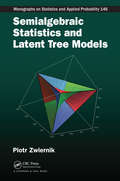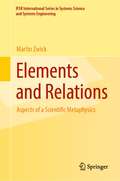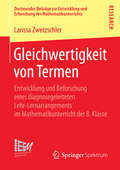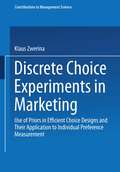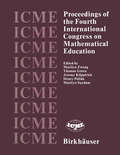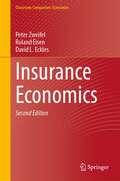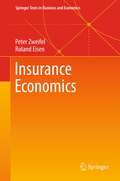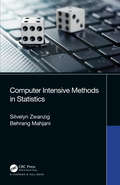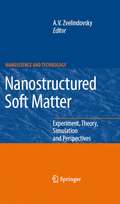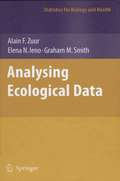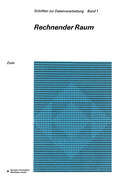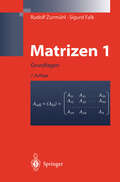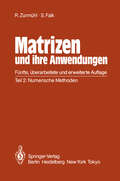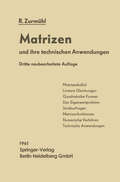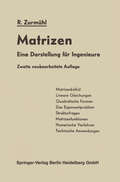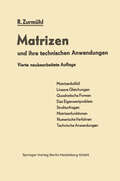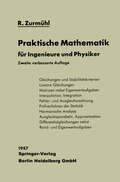- Table View
- List View
Principles of Data Mining and Knowledge Discovery: Third European Conference, PKDD'99 Prague, Czech Republic, September 15-18, 1999 Proceedings (Lecture Notes in Computer Science #1704)
by Jan Zytkow Jan RauchThis book constitutes the refereed proceedings of the Third European Conference on Principles and Practice of Knowledge Discovery in Databases, PKDD'99, held in Prague, Czech Republic in September 1999.The 28 revised full papers and 48 poster presentations were carefully reviewed and selected from 106 full papers submitted. The papers are organized in topical sections on time series, applications, taxonomies and partitions, logic methods, distributed and multirelational databases, text mining and feature selection, rules and induction, and interesting and unusual issues.
IT Crisisology Models: Object-Based Optimization for Sustainable Development (Smart Innovation, Systems and Technologies #381)
by Sergey V. ZykovThe book focuses on modeling real-world crisis management in digital product development. This includes models and methods for forecasting, responding, and agile engineering/managing for sustainable product development. This book suggests an approach that contains principles, formal models, and semi-formal practice-oriented methods, patterns and techniques to efficiently manage these crises and provide sustainable development. The book also introduces a set of principles, models, and methods for sustainable management as a blend, the components of which have been carefully selected from a few domains adjacent to digital production such as IT-intensive operation, human resource management, and knowledge engineering, to name a few. The key ingredients of this crisis management framework include smart data modeling, trade-off optimizing, agile product controlling, and knowledge transferring.
Contributions to Fourier Analysis. (AM-25) (PDF)
by Antoni Zygmund W. TransueThe description for this book, Contributions to Fourier Analysis. (AM-25), will be forthcoming.
Quantile Regression in Clinical Research: Complete analysis for data at a loss of homogeneity
by Aeilko H. Zwinderman Ton J. CleophasQuantile regression is an approach to data at a loss of homogeneity, for example (1) data with outliers, (2) skewed data like corona - deaths data, (3) data with inconstant variability, (4) big data. In clinical research many examples can be given like circadian phenomena, and diseases where spreading may be dependent on subsets with frailty, low weight, low hygiene, and many forms of lack of healthiness. Stratified analyses is the laborious and rather explorative way of analysis, but quantile analysis is a more fruitful, faster and completer alternative for the purpose. Considering all of this, we are on the verge of a revolution in data analysis. The current edition is the first textbook and tutorial of quantile regressions for medical and healthcare students as well as recollection/update bench, and help desk for professionals. Each chapter can be studied as a standalone and covers one of the many fields in the fast growing world of quantile regressions. Step by step analyses of over 20 data files stored at extras.springer.com are included for self-assessment. We should add that the authors are well qualified in their field. Professor Zwinderman is past-president of the International Society of Biostatistics (2012-2015) and Professor Cleophas is past-president of the American College of Angiology(2000-2002). From their expertise they should be able to make adequate selections of modern quantile regression methods for the benefit of physicians, students, and investigators.
CRC Standard Mathematical Tables and Formulas (Advances in Applied Mathematics)
by Daniel ZwillingerContaining more than 6,000 entries, CRC Standard Mathematical Tables and Formulas, 33rd Edition continues to provide essential formulas, tables, figures and detailed descriptions. The newest edition of this popular series also features many diagrams, group tables, and integrals that are not available online. This edition also incorporates important topics such as max plus algebra, financial options, pseudospectra, and proof methods. Newly updated topics reflecting new results include couple analogues, radar, and significant equations of mathematics. New features of the 33rd edition include: Larger trim size, five new topics, and topics which have been modified to update results Provides practical, ready-to-use information and covers important topics that are unfamiliar to many readers, such as visual proofs and sequences Includes hard-to-find and more complete information than found in the Internet such as table of conformal mappings and integral tables Adds descriptions of new functions: Lambert, prolate spheroidal, and Weierstrass Even though the book has been updated it retains the same successful format of previous editions in that material is still presented in a multi-sectional format.
Semialgebraic Statistics and Latent Tree Models
by Piotr ZwiernikSemialgebraic Statistics and Latent Tree Models explains how to analyze statistical models with hidden (latent) variables. It takes a systematic, geometric approach to studying the semialgebraic structure of latent tree models.The first part of the book gives a general introduction to key concepts in algebraic statistics, focusing on methods that a
Elements and Relations: Aspects of a Scientific Metaphysics (IFSR International Series in Systems Science and Systems Engineering #35)
by Martin ZwickThis book develops the core proposition that systems theory is an attempt to construct an “exact and scientific metaphysics,” a system of general ideas central to science that can be expressed mathematically. Collectively, these ideas would constitute a nonreductionist “theory of everything” unlike what is being sought in physics. Inherently transdisciplinary, systems theory offers ideas and methods that are relevant to all of the sciences and also to professional fields such as systems engineering, public policy, business, and social work. To demonstrate the generality and importance of the systems project, the book structures its content in three parts: Essay, Notes, and Commentary. The Essay section is a short distillation of systems ideas that illuminate the problems that many types of systems face. Commentary explains systems thinking, its value, and its relation to mainstream scientific knowledge. It shows how systems ideas revise our understanding of science and how they impact our views on religion, politics, and history. Finally, Notes contains all the mathematics in the book, as well as scientific, philosophical, and poetic content that is accessible to readers without a strong mathematical background. Elements and Relations is intended for researchers and students in the systems (complexity) field as well as related fields of social science modeling, systems biology and ecology, and cognitive science. It can be used as a textbook in systems courses at the undergraduate or graduate level and for STEM education. As much of the book does not require a background in mathematics, it is also suitable for general readers in the natural and social sciences as well as in the humanities, especially philosophy.
Gleichwertigkeit von Termen: Entwicklung und Beforschung eines diagnosegeleiteten Lehr-Lernarrangements im Mathematikunterricht der 8. Klasse (Dortmunder Beiträge zur Entwicklung und Erforschung des Mathematikunterrichts)
by Larissa ZwetzschlerLarissa Zwetzschler geht der Frage nach, wie die in der Forschung häufig beschriebenen Verstehensschwierigkeiten von algebraischen Termen und Termumformungen überwunden werden können und wie der Aufbau von tragfähigen inhaltlichen Vorstellungen zur Gleichwertigkeit von Termen unterstützt werden kann. Die Autorin hat einen Prototyp eines Lehr-Lernarrangements entwickelt und unterschiedliche Entwicklungslinien beim Vorstellungsaufbau herausgearbeitet.
Discrete Choice Experiments in Marketing: Use of Priors in Efficient Choice Designs and Their Application to Individual Preference Measurement (Contributions to Management Science)
by Klaus ZwerinaThe chapter starts with a positioning of this dissertation in the marketing discipline. It then provides a comparison of the two most popular methods for studying consumer preferences/choices, namely conjoint analysis and discrete choice experiments. Chapter 1 continues with a description of the context of discrete choice experiments. Subsequently, the research problems and the objectives ofthis dissertation are discussed. The chapter concludes with an outline of the organization of this dissertation. 1. 1 Positioning of the Dissertation During this century, increasing globalization and technological progress has forced companies to undergo rapid and dramatic changes-for some a threat, for others it offers new opportunities. Companies have to survive in a Darwinian marketplace where the principle of natural selection applies. Marketplace success goes to those companies that are able to produce marketable value, Le. , products and services that others are willing to purchase (Kotler 1997). Every company must be engaged in new-product development to create the new products customers want because competitors will do their best to supply them. Besides offering competitive advantages, new products usually lead to sales growth and stability. As household incomes increase and consumers become more selective, fmns need to know how consumers respond to different features and appeals. Successful products and services begin with a thorough understanding of consumer needs and wants. Stated otherwise, companies need to know about consumer preferences to manufacture tailor-made products, consumers are willing to buy.
Proceedings of the Fourth International Congress on Mathematical Education
by M. Zweng Green Kilpatrick Pollack SuydamHenry O. Pollak Chairman of the International Program Committee Bell Laboratories Murray Hill, New Jersey, USA The Fourth International Congress on Mathematics Education was held in Berkeley, California, USA, August 10-16, 1980. Previous Congresses were held in Lyons in 1969, Exeter in 1972, and Karlsruhe in 1976. Attendance at Berkeley was about 1800 full and 500 associate members from about 90 countries; at least half of these come from outside of North America. About 450 persons participated in the program either as speakers or as presiders; approximately 40 percent of these came from the U.S. or Canada. There were four plenary addresses; they were delivered by Hans Freudenthal on major problems of mathematics education, Hermina Sinclair on the relationship between the learning of language and of mathematics, Seymour Papert on the computer as carrier of mathematical culture, and Hua Loo-Keng on popularising and applying mathematical methods. Gearge Polya was the honorary president of the Congress; illness prevented his planned attendence but he sent a brief presentation entitled, "Mathematics Improves the Mind". There was a full program of speakers, panelists, debates, miniconferences, and meetings of working and study groups. In addition, 18 major projects from around the world were invited to make presentations, and various groups representing special areas of concern had the opportunity to meet and to plan their future activities.
Insurance Economics (Classroom Companion: Economics)
by Peter Zweifel Roland Eisen David L. EcklesInsurance Economics brings together the economic analysis of decision making under risk, risk management and demand for insurance among individuals and corporations, objectives pursued and management tools used by insurance companies, the regulation of insurance, and the division of labor between private and social insurance.Appropriate both for advanced undergraduate and graduate students of economics, management, and finance, this text provides the background required to understand current research. Predictions derived from theoretical arguments are not merely stated, but also related to empirical evidence. Throughout the book, conclusions summarize key results, helping readers to check their knowledge and comprehension. Issues discussed include paradoxes in decision making under risk and attempts at their resolution, moral hazard and adverse selection including the possibility of a “death spiral”, and future challenges to both private and social insurance such as globalization and the availability of genetic information. This second edition has been extensively revised. Most importantly, substantial content has been added to represent the evolution of risk-related research. A new chapter, Insurance Demand II: Nontraditional Approaches, provides a timely addition in view of recent developments in risk theory and insurance. Previous discussions of Enterprise Risk Management, long-term care insurance, adverse selection, and moral hazard have all been updated. In an effort to expand the global reach of the text, evidence and research from the U.S. and China have also been added.
Insurance Economics (Springer Texts in Business and Economics)
by Peter Zweifel Roland Eisen"Winner of the 2014 Kulp-Wright Book Award Presented by the American Risk and Insurance Association".More information can be found here:http://www.aria.org/awards/bookawards.htm Insurance Economics brings together the economic analysis of decision making under risk, risk management and demand for insurance by individuals and corporations, objectives pursued and management tools used by insurance companies, the regulation of insurance, and the division of labor between private and social insurance. Appropriete both for advanced undergraduate and graduate students of economics, management, and finance, this text provides the background required to understand current research. Predictions derived from theoretical argument are not only stated but confronted with empirical evidence. Throughout the book, conclusions summarize results, helping readers to check their knowledge and understanding. Issues discussed include paradoxa in decision making under risk, selection of favorable risks by insurers, the possibility of a "death spiral" in insurance markets, and future challenges such as re-regulation in the wake of the 2007-09 financial crisis and the increasing availability of generic information.
Computer Intensive Methods in Statistics
by Silvelyn Zwanzig Behrang MahjaniThis textbook gives an overview of statistical methods that have been developed during the last years due to increasing computer use, including random number generators, Monte Carlo methods, Markov Chain Monte Carlo (MCMC) methods, Bootstrap, EM algorithms, SIMEX, variable selection, density estimators, kernel estimators, orthogonal and local polynomial estimators, wavelet estimators, splines, and model assessment. Computer Intensive Methods in Statistics is written for students at graduate level, but can also be used by practitioners. Features Presents the main ideas of computer-intensive statistical methods Gives the algorithms for all the methods Uses various plots and illustrations for explaining the main ideas Features the theoretical backgrounds of the main methods. Includes R codes for the methods and examples Silvelyn Zwanzig is an Associate Professor for Mathematical Statistics at Uppsala University. She studied Mathematics at the Humboldt- University in Berlin. Before coming to Sweden, she was Assistant Professor at the University of Hamburg in Germany. She received her Ph.D. in Mathematics at the Academy of Sciences of the GDR. Since 1991, she has taught Statistics for undergraduate and graduate students. Her research interests have moved from theoretical statistics to computer intensive statistics. Behrang Mahjani is a postdoctoral fellow with a Ph.D. in Scientific Computing with a focus on Computational Statistics, from Uppsala University, Sweden. He joined the Seaver Autism Center for Research and Treatment at the Icahn School of Medicine at Mount Sinai, New York, in September 2017 and was formerly a postdoctoral fellow at the Karolinska Institutet, Stockholm, Sweden. His research is focused on solving large-scale problems through statistical and computational methods.
Computer Intensive Methods in Statistics
by Silvelyn Zwanzig Behrang MahjaniThis textbook gives an overview of statistical methods that have been developed during the last years due to increasing computer use, including random number generators, Monte Carlo methods, Markov Chain Monte Carlo (MCMC) methods, Bootstrap, EM algorithms, SIMEX, variable selection, density estimators, kernel estimators, orthogonal and local polynomial estimators, wavelet estimators, splines, and model assessment. Computer Intensive Methods in Statistics is written for students at graduate level, but can also be used by practitioners. Features Presents the main ideas of computer-intensive statistical methods Gives the algorithms for all the methods Uses various plots and illustrations for explaining the main ideas Features the theoretical backgrounds of the main methods. Includes R codes for the methods and examples Silvelyn Zwanzig is an Associate Professor for Mathematical Statistics at Uppsala University. She studied Mathematics at the Humboldt- University in Berlin. Before coming to Sweden, she was Assistant Professor at the University of Hamburg in Germany. She received her Ph.D. in Mathematics at the Academy of Sciences of the GDR. Since 1991, she has taught Statistics for undergraduate and graduate students. Her research interests have moved from theoretical statistics to computer intensive statistics. Behrang Mahjani is a postdoctoral fellow with a Ph.D. in Scientific Computing with a focus on Computational Statistics, from Uppsala University, Sweden. He joined the Seaver Autism Center for Research and Treatment at the Icahn School of Medicine at Mount Sinai, New York, in September 2017 and was formerly a postdoctoral fellow at the Karolinska Institutet, Stockholm, Sweden. His research is focused on solving large-scale problems through statistical and computational methods.
Nanostructured Soft Matter: Experiment, Theory, Simulation and Perspectives (NanoScience and Technology)
by A. V. ZvelindovskyThis book provides an interdisciplinary overview of a new and broad class of materials under the unifying name Nanostructured Soft Matter. It covers materials ranging from short amphiphilic molecules to block copolymers, proteins, colloids and their composites, microemulsions and bio-inspired systems such as vesicles.
Analyzing Ecological Data (Statistics for Biology and Health)
by Alain Zuur Elena N. Ieno Graham M. SmithThis book provides a practical introduction to analyzing ecological data using real data sets. The first part gives a largely non-mathematical introduction to data exploration, univariate methods (including GAM and mixed modeling techniques), multivariate analysis, time series analysis, and spatial statistics. The second part provides 17 case studies. The case studies include topics ranging from terrestrial ecology to marine biology and can be used as a template for a reader’s own data analysis. Data from all case studies are available from www.highstat.com. Guidance on software is provided in the book.
Rechnender Raum (Schriften zur Datenverarbeitung)
by Konrad ZuseEs ist uns heute selbstverständlich, daß numerische Rechenverfahren erfolgreich ein gesetzt werden können, um physikalische Zusammenhänge zu durchleuchten. Dabei haben wir entsprechend Bild 1 eine mehr oder weniger enge Verflechtung zwischen Mathematikern, Physikern und den Fachleuten der Informationsverarbeitung. Die mathematischen Lehrgebäude dienen dem Aufbau physikalischer Modelle, deren numerische Durchrechnung heute mit elektronischen Datenverarbeitungsanlagen er folgt. Die Aufgabe der Fachleute der Informationsverarbeitung besteht im wesentlichen darin, für die von den Mathematikern und Physikern entwickelten Modelle möglichst brauchbare numerische Lösungen zu finden. Ein rückwirkender'Einfluß der Daten verarbeitung auf die Modelle und die physikalische Theorie selbst besteht lediglich indirekt in der bevorzugten Anwendung solcher Methoden, die der numerischen Lö sung besonders leicht zugänglich sind. Das enge Zusammenspiel zwischen Mathematikern und Physikern hat sich sehr günstig in bezug auf die Entwicklung der Modelle theoretischer Physik ausgewirkt. Das mo derne Gebäude der Quantentheorie ist weitgehend reine bzw. angewandte Mathematik. Es scheint daher die Frage berechtigt, ob die Informationsverarbeitung bei diesem Zusammenspiel nur eine ausführende Rolle spielen kann, oder ob auch von dort be fruchtende Ideen gegeben werden können, welche die physikalischen Theorien selbst rückwirkend beeinflussen. Diese Frage ist umso berechtigter, als sich in enger Zusam menarbeit mit der Informationsverarbeitung ein neuer Zweig der Wissenschaft ent wickelt hat, nämlich die Automatentheorie. Im folgenden werden einige Ideen in dieser Richtung entwickelt. Dabei kann keinerlei Anspruch auf Vollständigkeit in der Behandlung des Themas erhoben werden.
Matrizen und ihre Anwendungen 1: Grundlagen Für Ingenieure, Physiker und Angewandte Mathematiker (Klassiker der Technik #30)
by Rudolf Zurmühl Sigurd FalkDas Buch behandelt Matrizengleichungen und -funktionen sowie die computergerechte Darstellung und Lösung der Bewegungsgleichungen von Schwingungssystemen mit endlich vielen Freiheitsgraden und führt in die Grundlagen der Näherungsmethoden von Rayleigh und Ritz ein. Das Eigenwertproblem wird, anders als sonst üblich, von einem allgemeinen Standpunkt aus betrachtet. Dadurch gewinnt die Darstellung an Verständlichkeit und an Anwendungsbreite. Das Buch ist sowohl für Studierende als auch für Physiker und Ingenieure in der Praxis geschrieben.
Matrizen und ihre Anwendungen für Angewandte Mathematiker, Physiker und Ingenieure: Teil 2: Numerische Methoden
by Rudolf Zurmühl Sigurd FalkPraktische Mathematik: für Ingenieure und Physiker
by Rudolf ZurmühlDas Buch ist gedacht als eine Ergänzung und Fortführung der mathematischen Grundlagenvorlesung der Technischen Hochschule. Es möchte den jungen Ingenieurstudenten zu einer über diese Vorlesung hinausgehenden Beschäftigung mit jenem Zweig der Mathematik an regen, der für die zahlenmäßige Behandlung von Ingenieuraufgaben aller Art grundlegend ist: mit den numerischen V erfahren der praktischen Mathematik. In diese Methoden, ihre Theorie und ihre praktische Hand habung führt es ein, wobei gleicher Wert auf klare Entwicklung der theoretischen Grundgedanken wie auf Einzelheiten der Zahlen rechnung gelegt wird. Aber auch dem in der Praxis tätigen Ingenieur möchte das Buch eine Hilfe sein, wenn er bei der Durchführung seiner Aufgaben vorder Notwendigkeit steht, auf numerische V erfahren zurück zugreifen. Ein Buch, das sich an Ingenieure und Physiker wendet, muß in mancher Hinsicht anders abgefaßt sein als ein für Mathematiker be stimmtes. Es soll gewiß nicht weniger zuverlässig und einwandfrei sein. Aber während der Mathematiker in die Lage versetzt werden soll, selbst aktiv an der Entwicklung neuer Methoden mitzuarbeiten, sollen Physi ker und Ingenieur in erster Linie die praktische Handhabung der Metho den erlernen, um sie als Hilfsmittel für ihre eigentliche Berufsarbeit anzuwenden. Damit sie das sinnvoll und richtig können, müssen sie freilich die mathematischen Grundlagen eines Verfahrens voll verstan den haben. Mit einer bloßen Rezeptsammlung ist auch ihnen durchaus nicht gedient.
